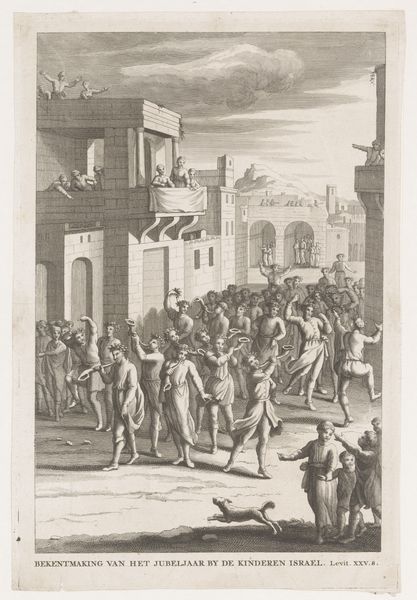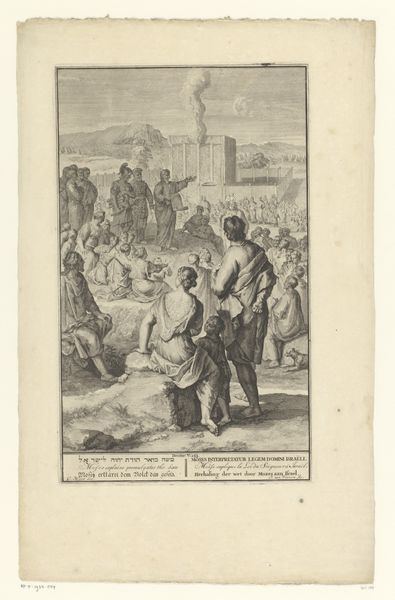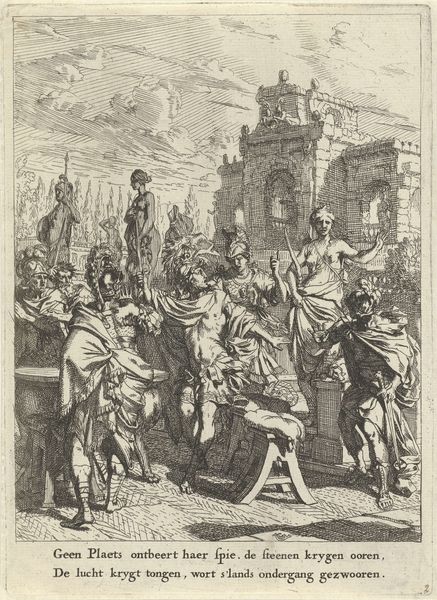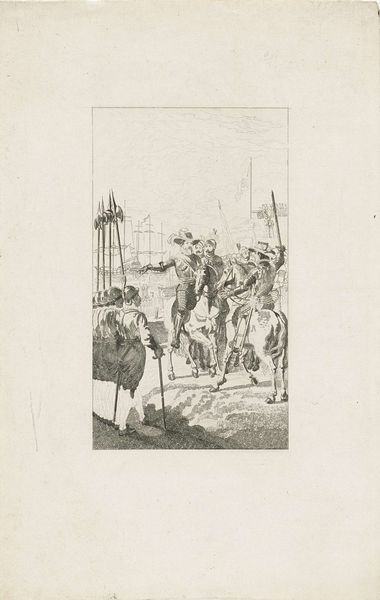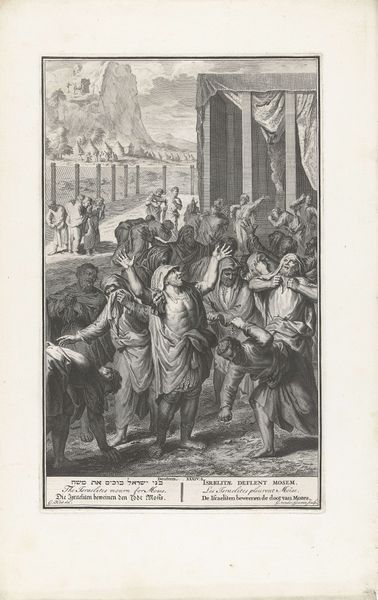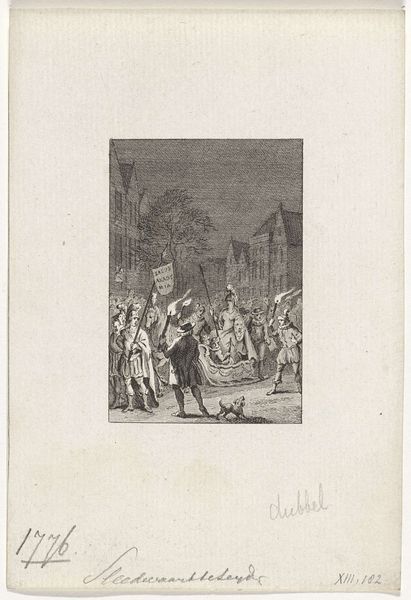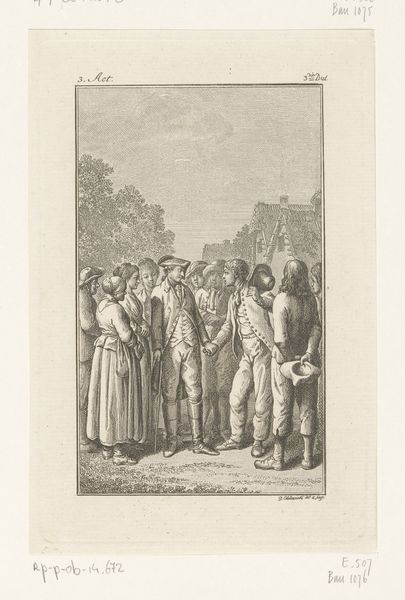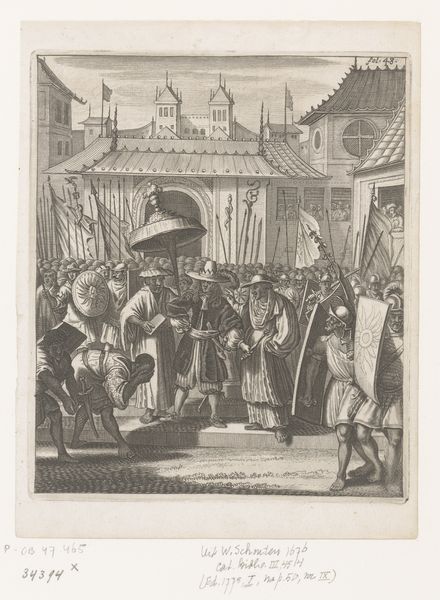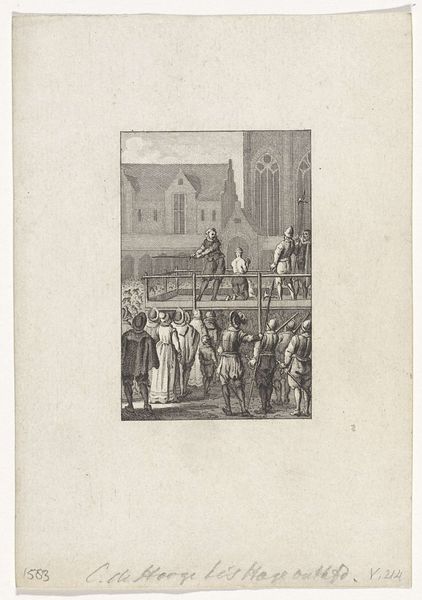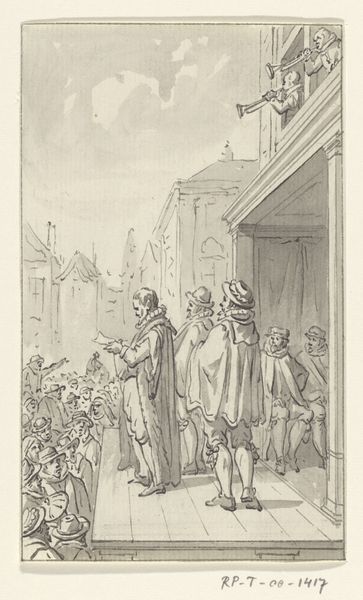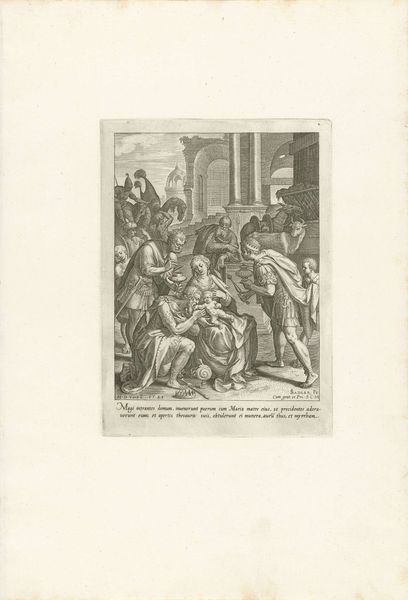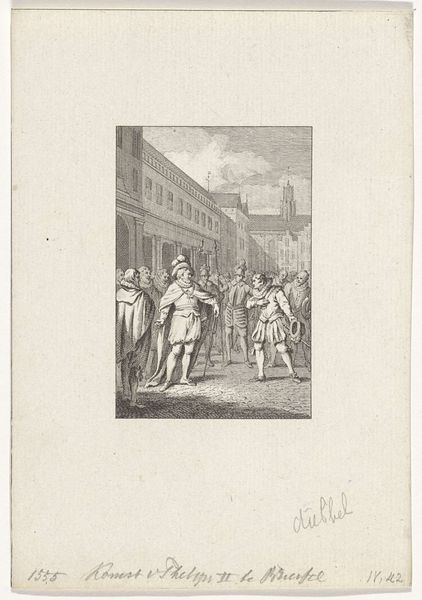
print, engraving
# print
#
landscape
#
figuration
#
romanticism
#
orientalism
#
line
#
cityscape
#
genre-painting
#
history-painting
#
engraving
Dimensions: 151 mm (height) x 96 mm (width) (plademaal)
Curator: This is Georg Christian Schule's "Tyrkisk gadescene," created in 1802. It's a print, an engraving actually, depicting a street scene in what was then Ottoman Turkey. What strikes you most about it? Editor: Immediately, it's the monochromatic intensity—almost austere. All that laboriously etched detail. It feels heavy somehow, despite being a relatively small print. The social context is implicit; I want to know the kind of artisanal production it involved and where was this print intended to be consumed? Curator: That sense of density certainly contributes to the mood. Consider the repeating motifs--the turbans, the domes topped with crescent moons. Schule is deploying those familiar signs of Orientalism. It certainly gives the image symbolic weight as a record. Editor: Orientalism indeed! You see that too. It highlights the social perspective; it seems to me, focusing as it does on creating this vision, a Westerner's exoticised vision constructed via the work. It feels consumed by consumption itself. What kind of circulation would a scene such as this command? Curator: Absolutely. And what purpose did this imagined image serve? In Schule's cultural milieu, the 'Orient' represented a space of fantasy, a reservoir of symbols representing despotism and sensual luxury. A society outside of European understanding. Editor: It certainly feels constructed as a commodity of cultural difference, which in turn depends on material distribution and accessible production means to become powerful as image. A romantic ideal filtered through accessible manufacture? Curator: Precisely. Perhaps for Schule and his audience, these repeated symbols served as a visual shorthand, conjuring an entire world, but viewed with European values. Consider that imposing building, as opposed to the crowd of similar looking people. A clear demonstration of social power, right? Editor: Agreed. That imposition reflects its purpose of dissemination and ideological position so sharply through the use of a reproducible material. Curator: Looking again at this print, the more subtle nuances in Schulze’s portrayal start to appear and begin to raise unanswered questions regarding his possible intentions. Editor: Absolutely. For me, this has really underlined how crucial the modes of making are to unlocking such works of art.
Comments
No comments
Be the first to comment and join the conversation on the ultimate creative platform.
